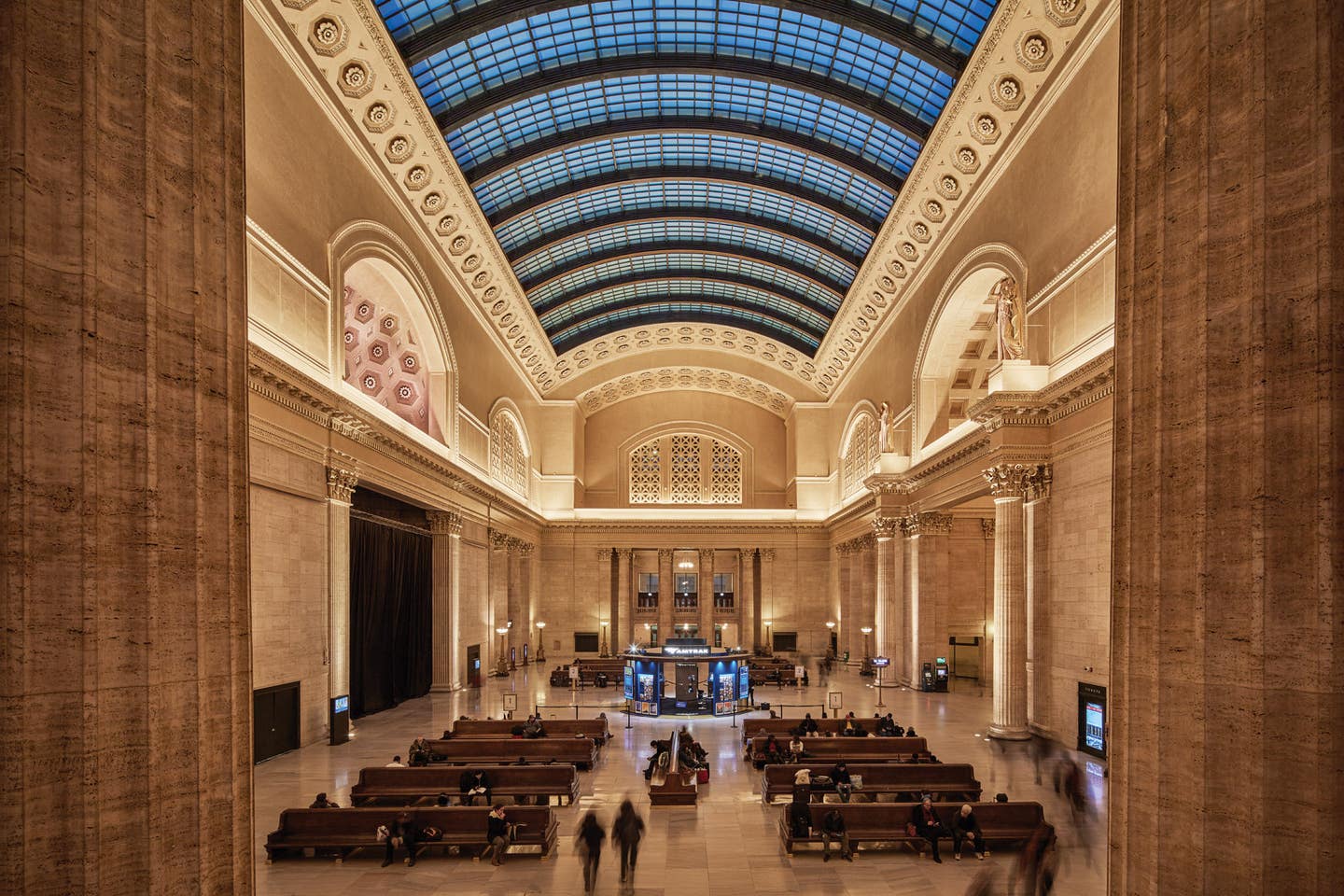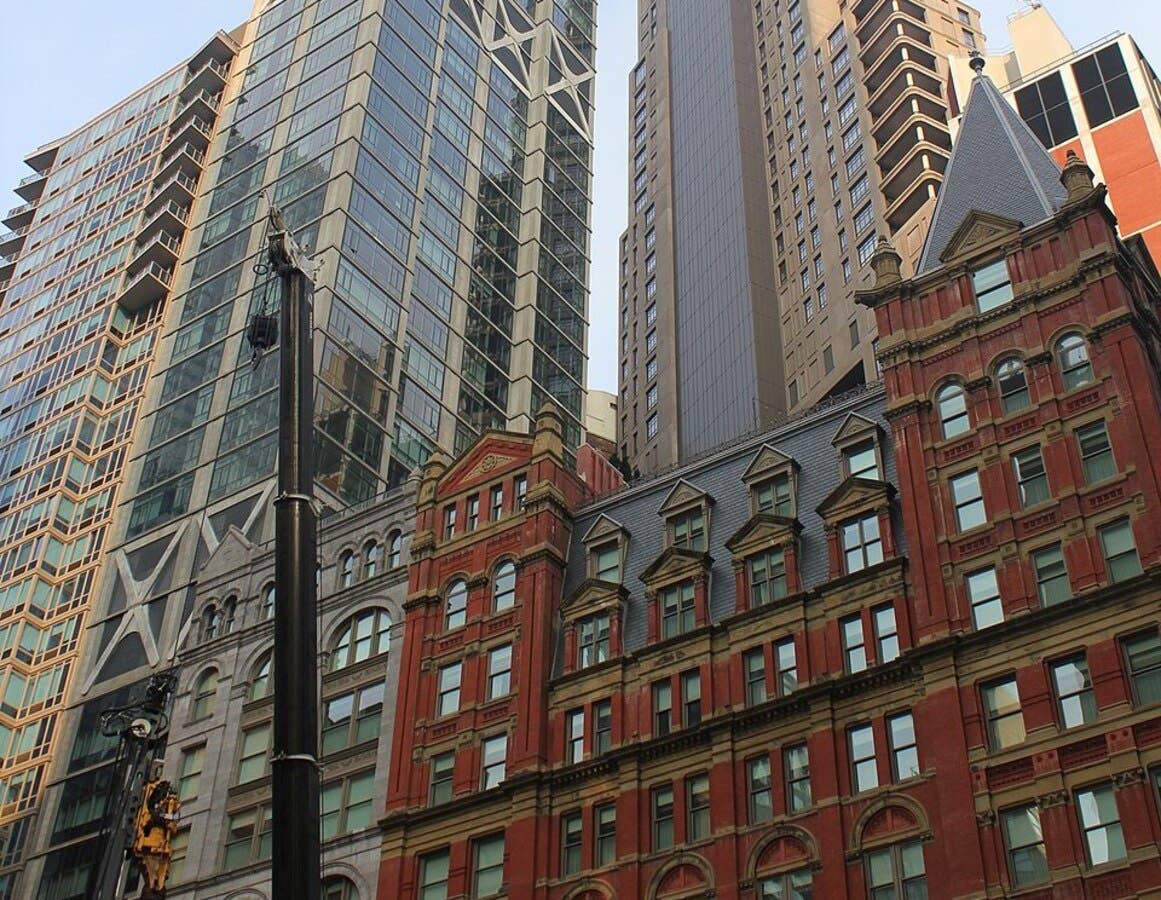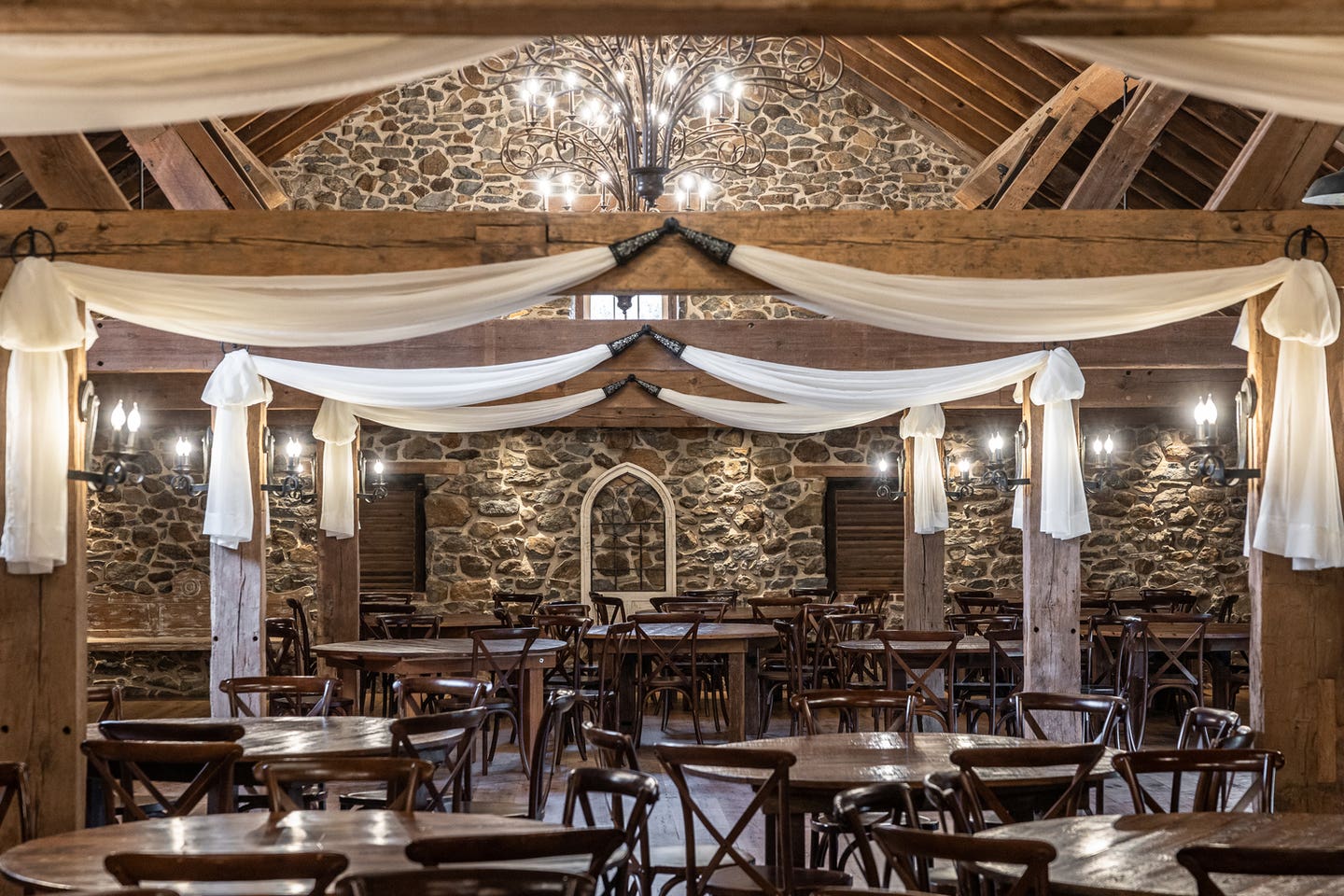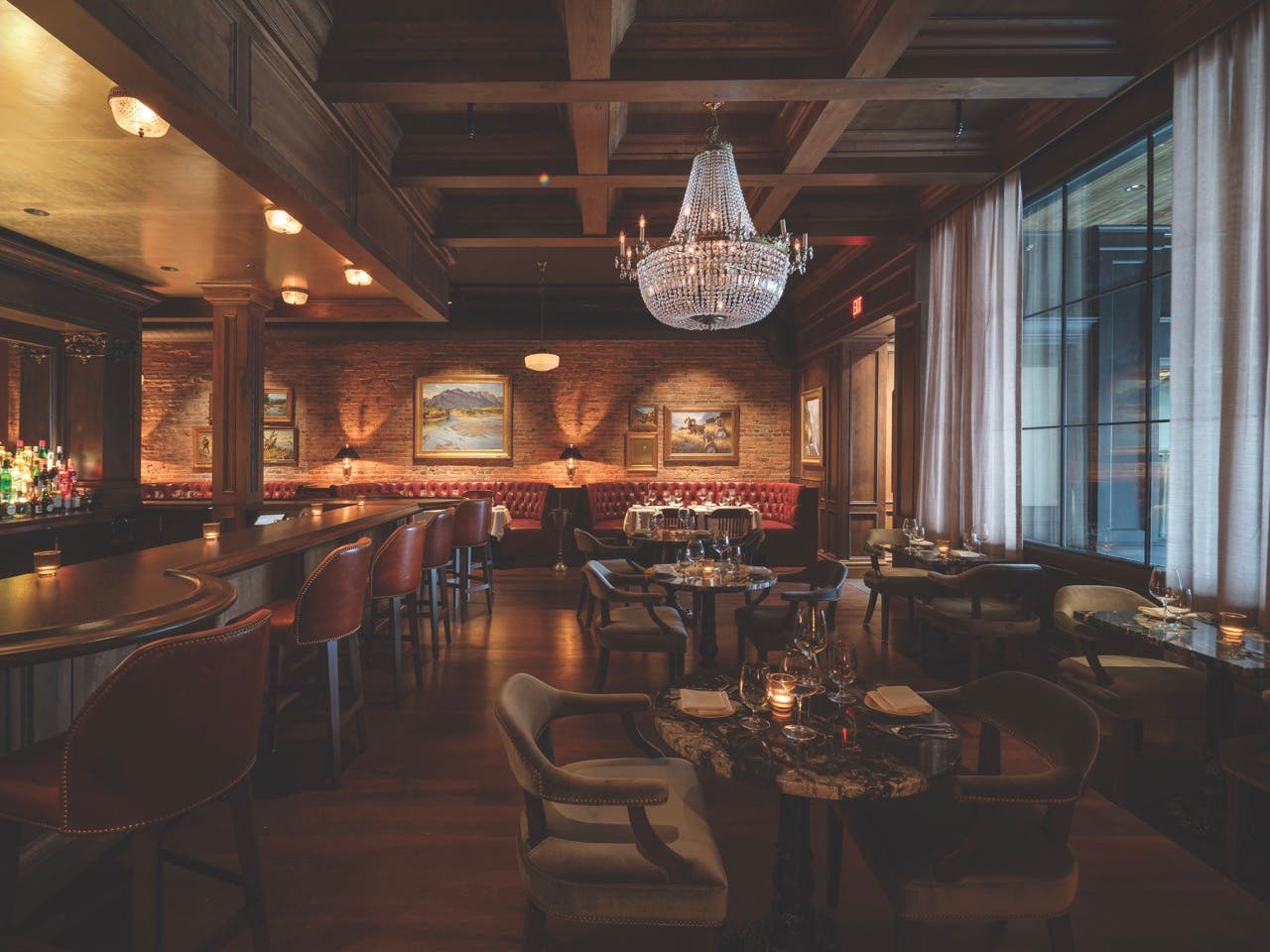
Restoration & Renovation
The Ceiling Restoration of Chicago’s Union Station
Project Chicago’s Union Station
Architect Goettsch Partners
Every day, some 120,000 rail travelers pass through Chicago’s Union Station, which has been a city icon as well as a major transit hub for nearly a century.
Originally envisioned by architect Daniel Burnham, who was director of the World’s Columbian Exposition of 1893, it was designed by his successor firm, Graham, Anderson, Probst and White, whose Wrigley Building, Federal Reserve Bank of Chicago, and the Field Museum of Natural History define the city’s skyline.
The Indiana limestone monolith, which stands prominently on the west side of the Chicago River and serves as Amtrak’s Midwest flagship, has undergone a number of restorations and renovations throughout its history.
The latest—the $22-million restoration of its barrel-vaulted 219-foot-long skylight, which soars 115 feet over its Great Hall—was undertaken by the Windy City-based firm of Goettsch Partners, which has worked on various projects at the Amtrak-owned terminal over the last decade.
The original cast-iron skylight, the defining feature of the station’s ornate Beaux-Arts Great Hall, had deteriorated over time for a number of reasons, including design flaws that fostered inadequate drainage that produced leaks that stained and damaged surrounding interior architectural elements and sculptural artwork.
“The glass panes themselves were set into oil-based sealants that allowed air and water infiltration,” says Goettsch Partners’ Len Koroski, FAIA, LEED AP, principal in charge, who added that the problems were apparent as early as the 1930s.
“The skylight was not designed for service or snow loads,” he says. “There has been a constant effort to fix it; about a half century ago, roofing strips were applied to cover the cast-iron joints to stop the leaks. These Band-Aids cut the natural light by half. It also had been tarred over during World War II to protect it from enemy fire, and this treatment wasn’t removed until the 1970s.”
After mulling several options, Koroski and his team—consulting partner Larry Weldon, AIA, senior consultant Randy Chapple, AIA, SE, CSI, and associate Andrew Fox—decided not only to restore the original skylight but also to design an energy-efficient, modern skylight five feet above it as an insulating protective cover.
“We wanted a solution that would last for the next 100 years,” Koroski says. “And we wanted to make the Great Hall, which is where passengers wait for trains, a brighter, more inviting space.”
The Goettsch Partners team also determined that even if the original skylight were reproduced, it would still have the same problems. “But we decided to restore it because too many historic buildings are losing their integrity,” Koroski said.
The glass panes in the original skylight were replaced by new ones that mimicked the look of the old.
The new high-performance skylight, which is made of steel and 858 panes of clear, low-E-coated glass, increases the natural light in the Great Hall by 50 percent. It’s also energy efficient—it contributes to a 60-percent reduction in HVAC energy consumption and a 60-percent reduction in the consumption of electricity from lighting.
The five feet between the skylights allows room for servicing and cleaning each.
One of the greatest challenges of rejuvenating the skylight, Koroski says, was understanding the technical issues that produced its problems in the first place. “We studied the root causes and the trickle-down effects, and we prudently presented options that would give the best and longest return on investment,” he says. “We mulled this for months.”
The team, which originally made visual inspections of the skylight in 2016 using 115-foot booms, was unprepared for the rapid acceleration of the deterioration. “By the spring and fall of 2018, when we were ready to start work, this had had a huge impact on the plaster, masonry and roofs,” Koroski says.
Logistics were another major concern. The rail station, the fourth busiest in the nation, could not be shut down during the construction work. Instead of towering scaffolding that would have made it difficult for commuters to move through the space, the team erected a 24,000-square-foot deck, a technique used in bridge restoration, that was suspended below the original skylight.
“There were swing-stage scaffolds,” Koroski says, adding that the glass for the skylight was craned in on wire cables and put into place by a hoist. “It looked like the Wizard of Oz behind his curtain because with the work lights, you could see the shadows of the workers.”
The project, which took 42 months, also included structural improvements, new plumbing, plaster repair, restored ornamentation and new and historic lighting.
“We focused extensively on preserving the historic design features of the building while making necessary improvements and repairs to stabilize this landmark for the long term,” Koroski says.
Determining the original color of the ceiling’s ornate plasterwork also proved problematic. “The paint analysis showed a dark color that disagreed with our research,” he says. “While we were deciding what to do, we went on to other things, and in that time, the sunlight revealed the original color. We realized that successive layers of paint had chemically altered the original. There was a simple finish—there was only one paint and one glaze, but it required a tremendous effort to replicate the density and shadowing of the glaze coat.”
Restoring the station’s pair of Night and Day statues to their golden glory was another key part of the project. Day, who is holding a rooster, and Night, who is cradling an owl, were designed by sculptor by Henry Hering and have been in the station since its opening in 1925.
The team also installed a new elevator on the east side of the building to improve accessibility and restored 24 original chandeliers and added 27 historic reproduction fixtures to improve interior illumination.
When the Great Hall’s restoration was completed, the city celebrated with a lighting ceremony.
“Bringing back the full splendor of this iconic space is a major milestone in the total renovation of Chicago Union Station,” Koroski says, adding that the terminal is the welcoming face of the city for commuters from near and far.
Its beauty, he adds, goes far beyond its design. “Chicago Union Station is a civic place, a neighborhood place, a development project, a transportation project, a restoration project,” he says. “It’s a project with many stories on many levels.”
Key Suppliers
Architect Goettsch Partners
Program Manager/Building Manager CBRE
General Contractor Berglund Construction
Structural Engineer Klein & Hoffman
New and Original Skylight Glazing Oldcastle
New and Original Skylight Fabrication/Installation Super Sky Products Enterprises
Color Analysis EverGreene Architectural Arts
Painting Oosterbaan & Sons Co., assisted by EverGreene Architectural Arts
Travertine Profile Carving Galloy & Van Etten
Cast-Iron Restoration/Glazing MTH
Great Hall Lighting Elliptipar, Luminii, ETC
Lighting Restoration/Reproduction Archistoric








